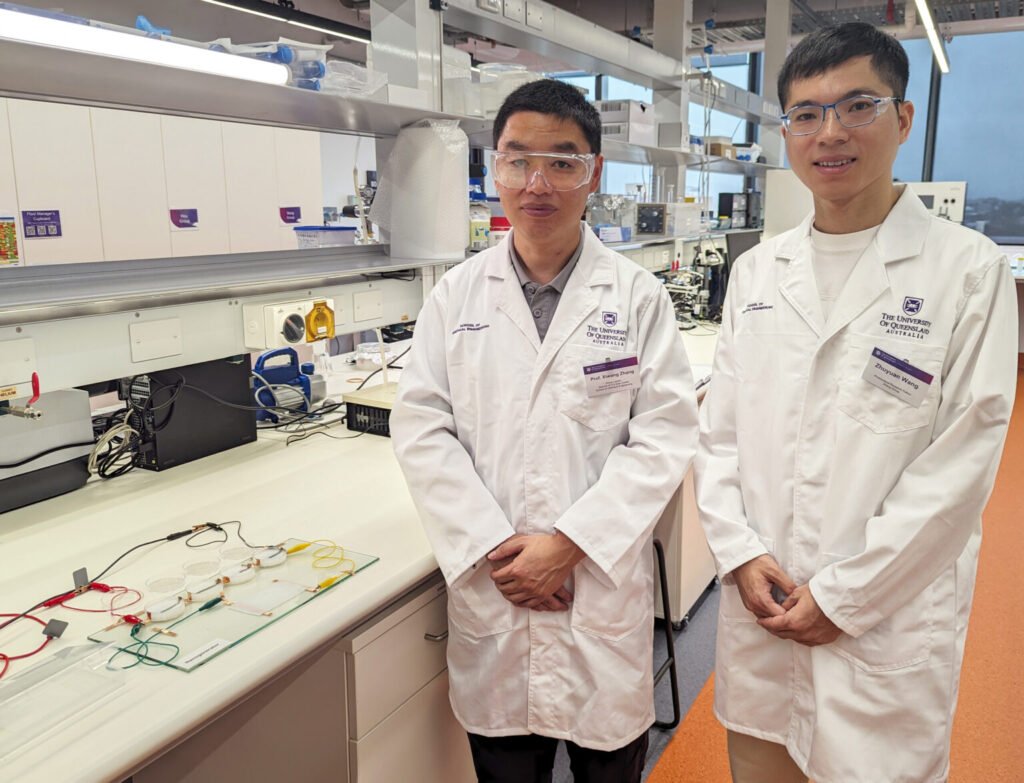Excess carbon dioxide (CO2) in the atmosphere is a major contributor to climate change. But what if we could turn this threat into a solution? Researchers at the University of Queensland (UQ) in Australia have taken a significant step towards this goal by developing a prototype nano-generator that absorbs CO2 and produces electricity.
Spontaneous Electricity Generation
This innovative nanogenerator, created by Dr. Zhuyuan Wang and his team at UQ’s ARC GETCO2 Centre, operates without the need for external energy input. The technology leverages a two-pronged approach:
- CO2 Absorption: The generator utilizes a polyamine gel, a material already used in industries for CO2 capture. This gel effectively traps CO2 molecules.
- Ion Transport and Electricity Generation: A boron nitride membrane, just a few atoms thick, plays a crucial role. As the captured CO2 interacts with the membrane, it separates into positive and negative ions. By design, the researchers have engineered the positive ions to be larger than the negative ions. This size difference creates a movement of ions at varying speeds within the membrane, generating a “diffusion current.” This current can be amplified to produce electricity capable of powering small electronic devices or even light bulbs.

Scalability and Efficiency: The Road Ahead
Currently, the prototype generator captures only around 1% of the available energy from CO2. However, the UQ team is actively exploring methods to increase this efficiency to a range of 10-20%. At such a level, the technology could compete with established renewable energy sources like wind turbines and solar panels.
Real-World Applications: Beyond the Lab
The versatility of this CO2-eating generator is another exciting aspect. The current setup uses CO2 from a gas bottle, but the future envisions capturing CO2 directly from the air. This opens up possibilities for installation in various scenarios:

- Industrial settings: Factories with high CO2 emissions could utilize the generator to both reduce their environmental footprint and generate on-site power.
- Carbon capture and storage (CCS) facilities: Integration with CCS could significantly lower operational costs by converting captured CO2 into a valuable resource.
This technology boasts the potential to be carbon negative, meaning it removes more CO2 from the atmosphere than it produces during operation. Although, it is still under development, its potential is undeniable.
Reference- University of Queensland News, Clean Technica, Futurism, Youtube, Journal Nature, Interesting Engineering







